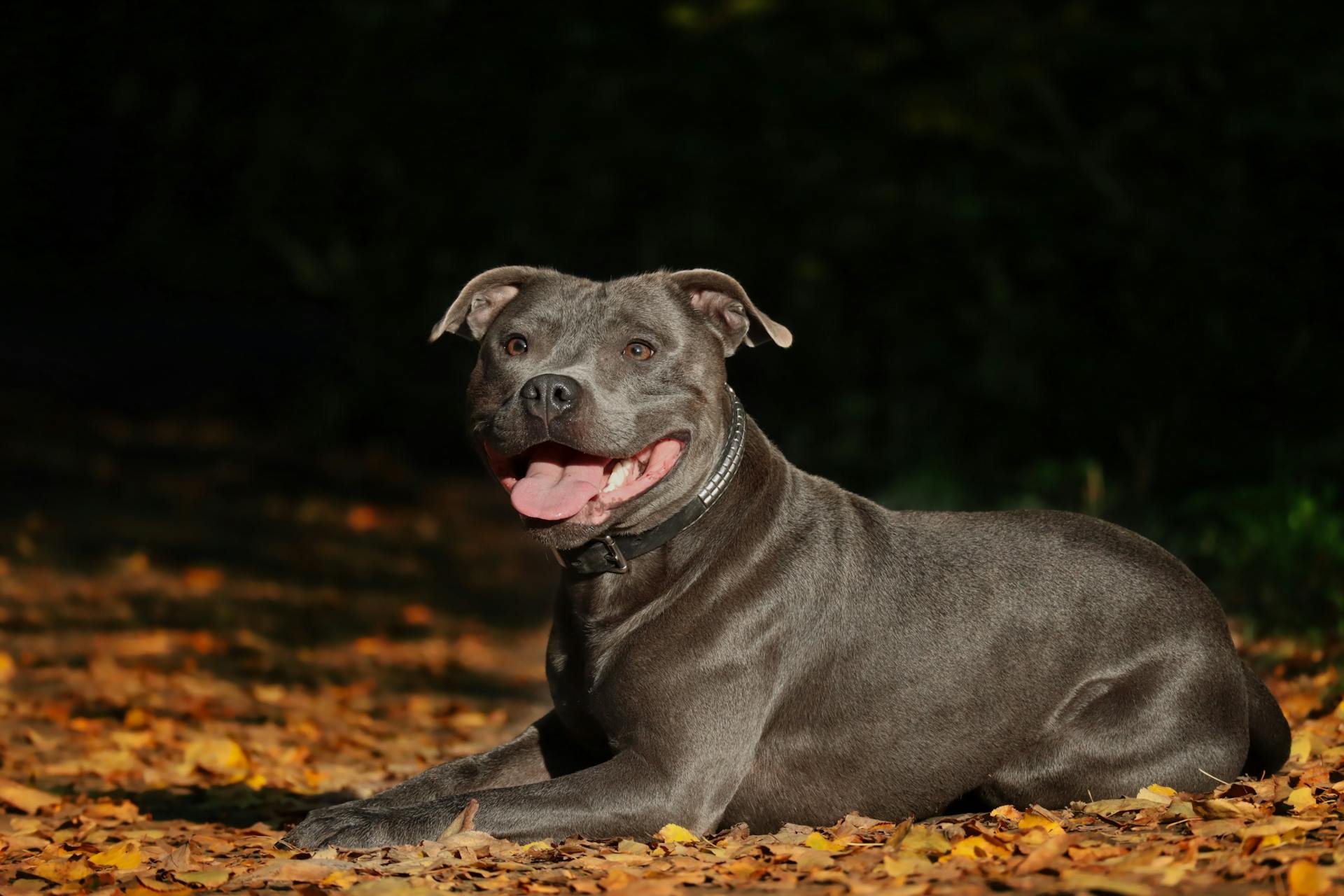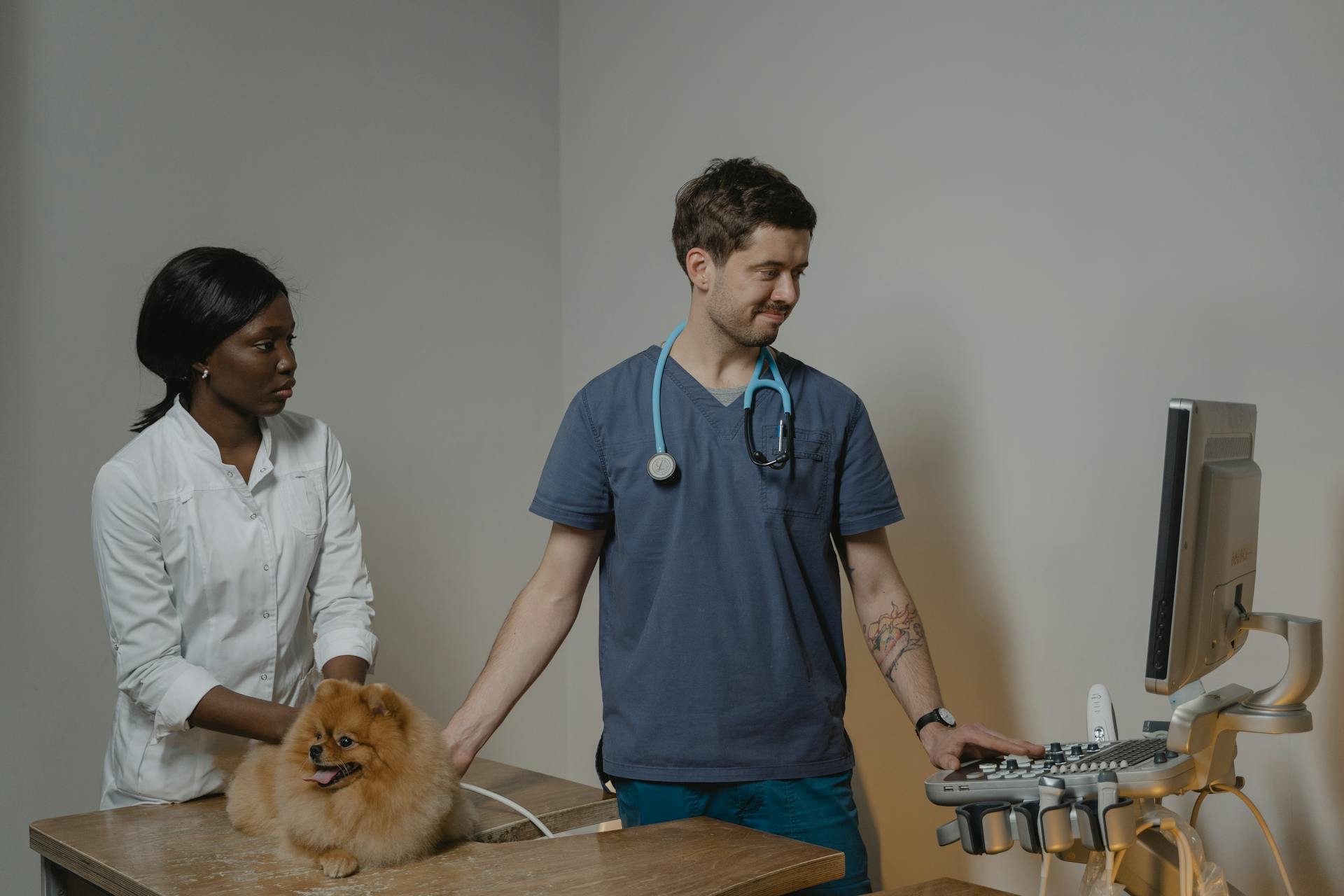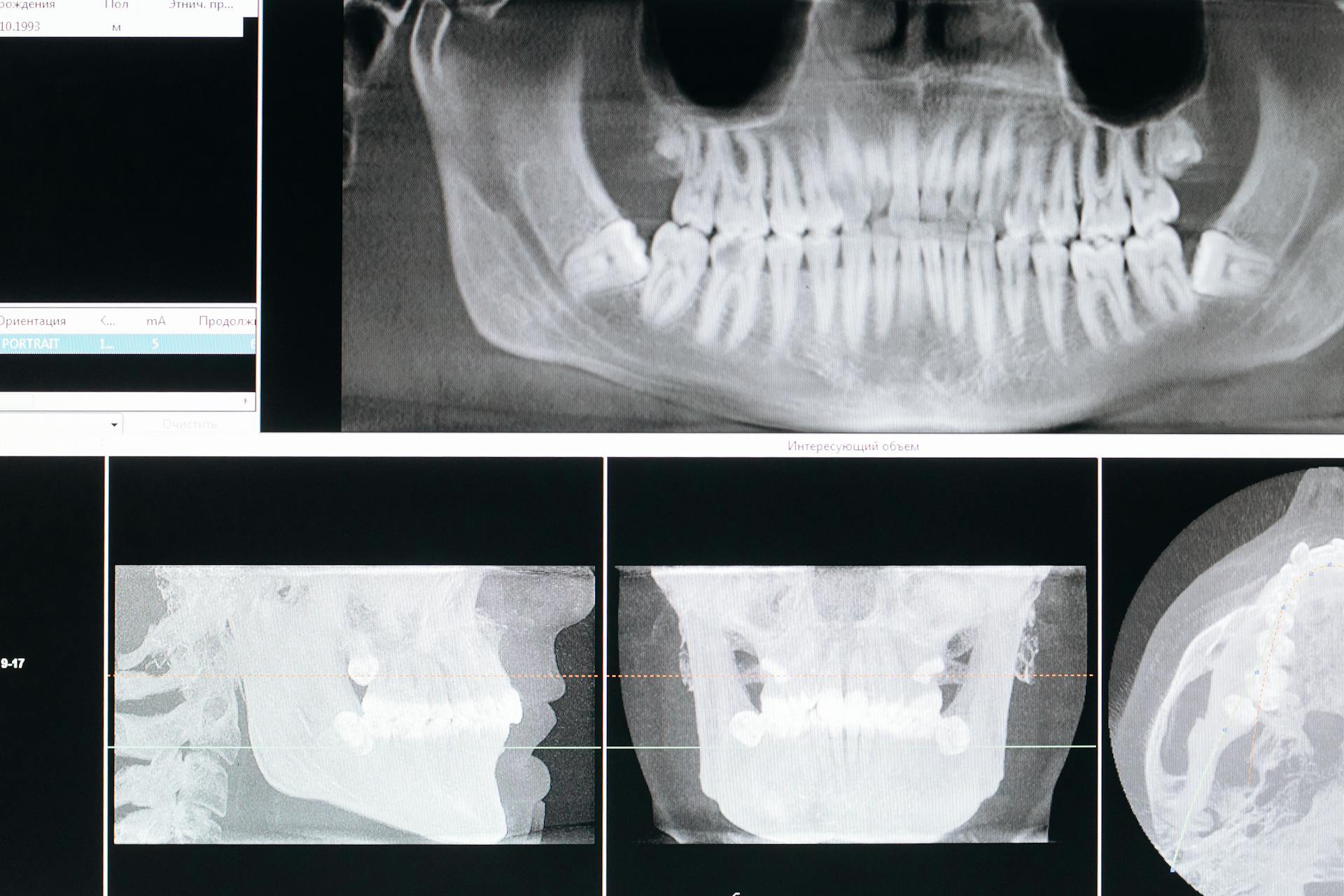
Canine salivary gland cancer symptoms can be subtle and may not be immediately noticeable to pet owners.
The most common symptom is a swelling or mass in the area of the salivary gland, which can be located in the mouth, near the teeth, or on the side of the face.
Some dogs may also experience difficulty eating or swallowing due to the mass's location.
In some cases, the cancer can cause the dog to drool excessively, as the salivary gland is responsible for producing saliva.
A diagnosis of canine salivary gland cancer is typically made through a combination of physical examination, imaging studies, and biopsy.
Intriguing read: Salivary Glands in Dogs Anatomy
Causes and Diagnosis
Canine salivary gland cancer is a serious condition that requires prompt attention. Salivary gland tumors are diagnosed through a fine needle aspiration (FNA) and cytology, which involves taking a small needle and suctioning a sample of cells directly from the swelling.
See what others are reading: Mammary Gland Tumor
The veterinarian will then examine the cells under a microscope to determine if the swelling is neoplastic or non-neoplastic. A veterinary pathologist is the one who examines the cells to make this determination.
A biopsy and histopathology are required for a conclusive diagnosis, which involves surgically excising one or more pieces of the tumor. This is done to examine the tumor under the microscope.
If your vet suspects a salivary gland adenocarcinoma, they will perform an examination, which may include reviewing the dog's health record and discussing any symptoms you've noticed.
Symptoms and Progression
Symptoms of canine salivary gland cancer can be quite subtle at first, but they can quickly escalate if left untreated. Difficulty swallowing is one of the earliest signs, often accompanied by bad breath and a change in your dog's voice.
A painless swelling near a salivary gland or in the upper neck, ear base, or upper lip is a common symptom. This swelling can be quite noticeable, and it's often the first thing pet owners notice. Your dog may also start to drool more than usual.
If left untreated, salivary gland tumors can continue to grow and invade surrounding tissues, sometimes spreading to other areas of the body, such as nearby lymph nodes or the lungs.

Here are some common symptoms of salivary gland cancer in dogs:
- Difficulty swallowing
- Changes in your dog's voice (barking)
- Firm, painless swelling near a salivary gland
- One eye bulging out
- Swelling of the lips, cheeks, near the ear/upper neck, or under the tongue
- Bad breath (halitosis)
- Drooling
- Difficulty eating (reluctance to chew or dropping food)
- Trouble swallowing
- Loss of appetite
- Lethargy
- Change in voice (bark or meow)
- Sneezing
- Limited ability to yawn
- Eye bulging outwards
Symptoms in Dogs
Symptoms in dogs can be a real challenge to identify, but knowing what to look out for can make a big difference. Difficulty swallowing is one of the most common symptoms of salivary gland adenocarcinoma in dogs, so if you notice your dog is having trouble eating or drinking, it's a good idea to get them checked out.
Changes in your dog's voice, such as a change in barking, can also be a sign of a salivary gland tumor. I've seen dogs with this condition who have a very different bark than they used to, and it's always a concern.
A firm, painless swelling near a salivary gland can be a sign of a tumor, and it's usually located in the upper neck, ear base, or upper lip. This swelling can be quite noticeable, and it's often one of the first things owners notice.
In addition to these symptoms, dogs with salivary gland adenocarcinoma may also experience swelling of the lips, cheeks, near the ear/upper neck, or under the tongue. This swelling can be uncomfortable for your dog, and it's a good idea to get them checked out by a veterinarian.
Here are some common symptoms of salivary gland tumors in dogs:
- Difficulty eating (reluctance to chew or dropping food)
- Trouble swallowing
- Bad breath (halitosis)
- Drooling
- Changes in your dog's voice (bark or meow)
- Sneezing
- Limited ability to yawn
- Protruding (bulging) eye nearest to the swelling
How Do Tumors Typically Progress?
Salivary gland tumors will continue to grow and invade the surrounding tissues without treatment.
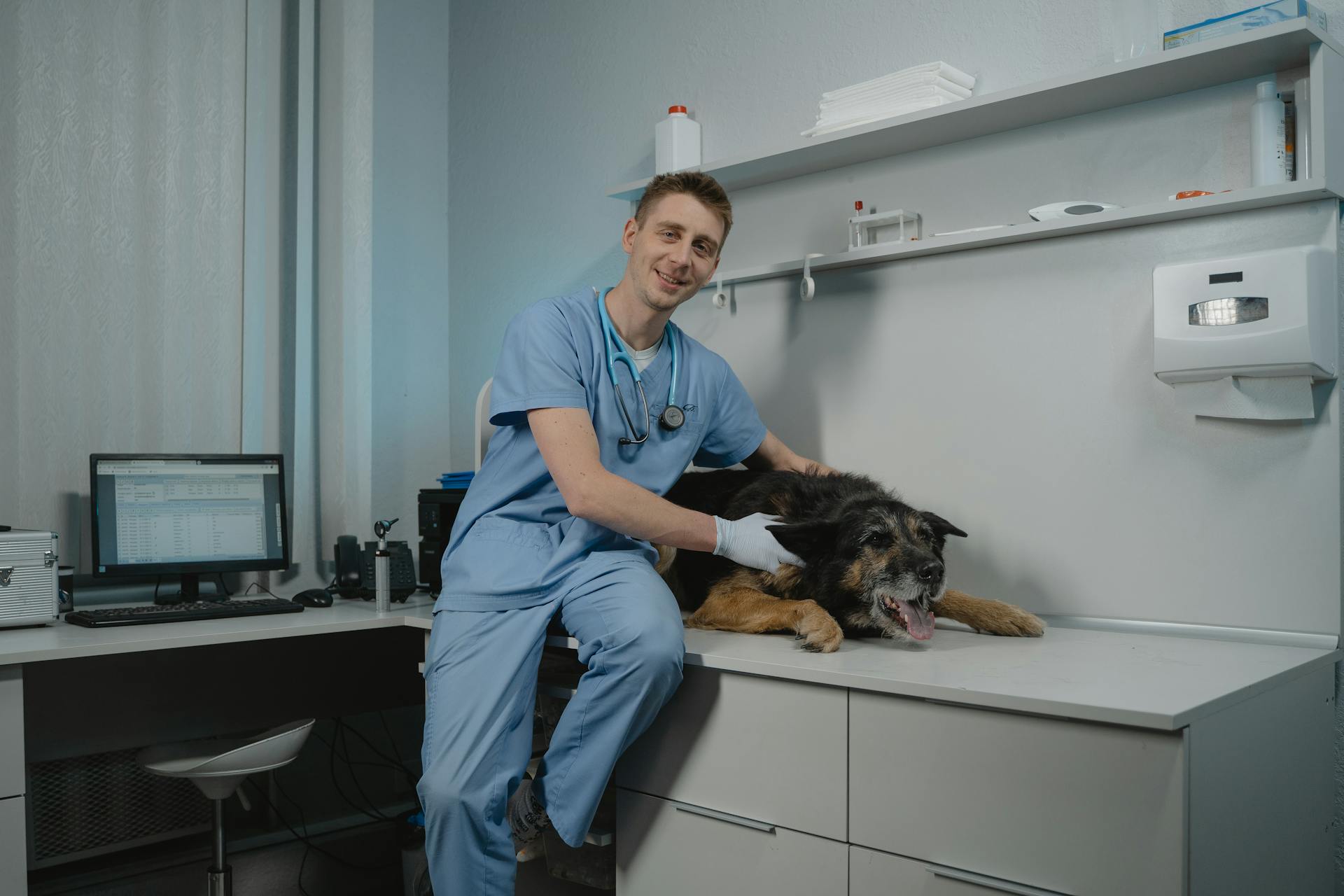
They can spread to other areas of the body, most commonly to the nearby lymph nodes, but occasionally to other areas as well.
Staging is highly recommended to search for potential spread to other locations in the body.
This may include bloodwork, urinalysis, X-rays of the lungs, and an abdominal ultrasound.
A CT scan may be recommended prior to treatment, and in some cases, a full body scan may be advised to screen for metastasis.
Worth a look: How Fast Does Lymphoma Grow in Dogs
Adenocarcinoma
Adenocarcinoma is a type of cancer that affects the salivary glands in dogs. It's an aggressive and malignant type of cancer that needs to be diagnosed and treated by a veterinarian.
The most common type of salivary gland cancer in dogs is adenocarcinoma, which forms in the cells that line the salivary glands and creates a tumor. This type of cancer is often found in the parotid gland, which is located around the base of the ear.
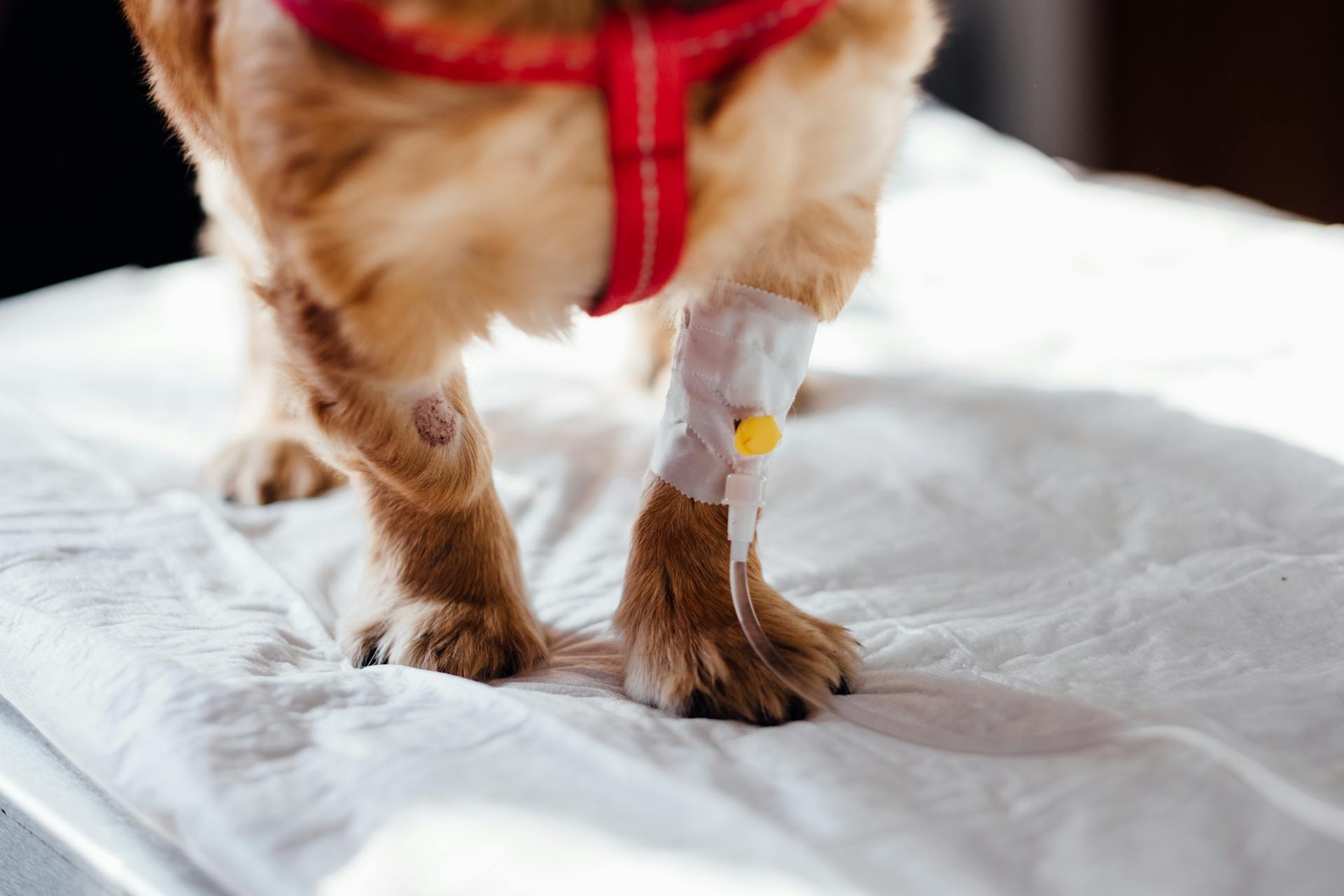
There are four pairs of salivary glands in dogs, located below the eye, behind the jawbone, under the tongue, and around the base of the ear. The parotid gland is the most affected by adenocarcinoma.
Dogs with adenocarcinoma may experience symptoms such as swelling in the face, difficulty eating, and drooling. If you suspect that your dog has adenocarcinoma, it's essential to take them to a veterinarian for a proper diagnosis.
The primary treatment for adenocarcinoma is surgery to remove the tumor. However, before surgery, your vet may perform tests to determine if the cancer has spread to other parts of the dog's body.
Here are some common sites where adenocarcinoma can spread:
- Nearby lymph nodes
- The lungs
Your vet may recommend additional tests, such as a CT scan or MRI, to examine the area around the gland and determine the cancer's stage.
How Tumors Are Diagnosed
Diagnosing canine salivary gland cancer can be a multi-step process. A fine needle aspiration (FNA) and cytology are often used as a first step to determine if the swelling is neoplastic or non-neoplastic.
Your veterinarian will likely perform an examination, reviewing your dog's health record and discussing any symptoms you've noticed, such as difficulty swallowing or eating, bad breath, or other symptoms.
A fine needle biopsy may be used to collect cells from the tumor to examine under a microscope. During this procedure, your vet will use a very fine needle to collect a small sample of cells from the tumor.
A surgical biopsy may be recommended, where your veterinarian will remove either all or part of the tumor in a surgical procedure. The removed tissue will be sent to a pathologist to examine the tissue and make a diagnosis.
X-rays of the skull and neck may be recommended to look for changes in the bone near the affected salivary gland. Abnormal cells may be present, prompting your vet to order these x-rays.
Frequently Asked Questions
How long can a dog live with salivary gland cancer?
For dogs with adenocarcinoma, the average survival time without treatment is approximately 1.5 years. Treatment options can significantly impact a dog's prognosis and overall survival time.
What is the first stage of salivary gland cancer?
The first stage of salivary gland cancer is Stage I, where the tumor is 2 centimeters or smaller and hasn't spread to the lymph nodes. This is a very early stage of cancer, indicating a potentially treatable condition.
Sources
- https://vetster.com/en/conditions/dog/adenocarcinoma
- https://vcahospitals.com/know-your-pet/salivary-tumors
- https://www.petmd.com/dog/conditions/cancer/c_dg_adenocarcinoma_salivary_gland
- https://www.jstage.jst.go.jp/article/tox/19/3/19_3_147/_pdf
- https://www.petcancercenter.org/Cancer_Types_salivary_gland.html
Featured Images: pexels.com
